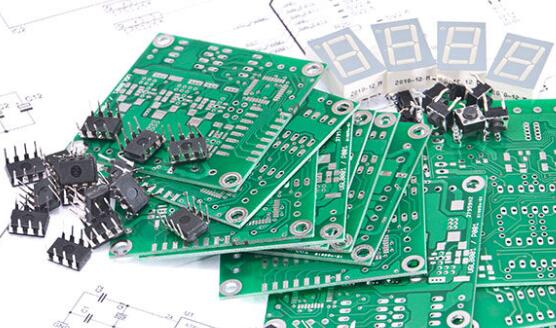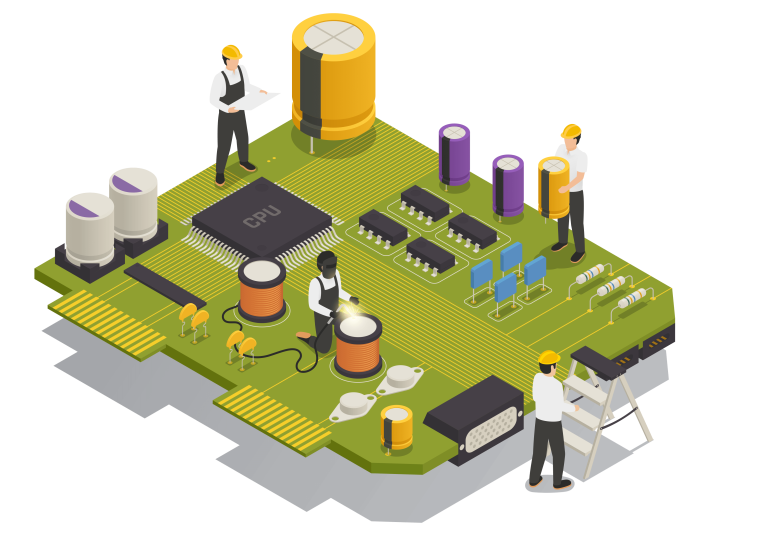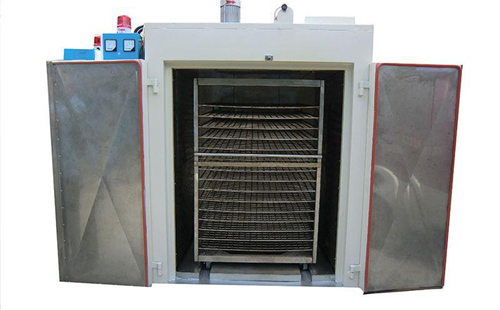Difference between pcb and breadboard
Construction And Materials: PCB Vs. Breadboard
Printed Circuit Boards (PCBs) and breadboards are fundamental tools in the realm of electronics, each serving distinct purposes and constructed from different materials. Understanding the construction and materials of PCBs and breadboards is crucial for anyone involved in electronic design and prototyping.
PCBs are meticulously designed and manufactured to provide a permanent and reliable platform for electronic circuits.
They are typically made from a non-conductive substrate, such as fiberglass-reinforced epoxy resin, known as FR4. This substrate provides mechanical support and electrical insulation for the components mounted on the board. The conductive pathways on a PCB are created using thin layers of copper, which are etched to form intricate circuit patterns.
These copper traces connect various components, such as resistors, capacitors, and integrated circuits, ensuring precise and stable electrical connections. Additionally, PCBs often feature a solder mask, a protective layer that prevents solder bridges and short circuits, and a silkscreen layer, which provides component labels and other important information.
In contrast, breadboards are designed for temporary and flexible prototyping.
They are constructed from a plastic base with a grid of holes, into which electronic components and jumper wires can be inserted. The holes are connected by metal strips underneath the plastic surface, forming rows and columns that allow for easy and quick connections. Breadboards do not require soldering, making them ideal for experimenting with circuit designs and making rapid modifications. The materials used in breadboards are generally less durable than those in PCBs, as breadboards are intended for short-term use and frequent reconfiguration.
Transitioning from the materials to the construction process, PCBs undergo a series of precise and controlled manufacturing steps.
The process begins with designing the circuit layout using specialized software. Once the design is finalized, it is transferred onto the copper-clad substrate through a photolithographic process. The unwanted copper is then etched away, leaving behind the desired circuit pattern. Holes are drilled for component leads, and the board is coated with a solder mask. Finally, components are soldered onto the board, either manually or using automated machines, ensuring secure and permanent connections.
On the other hand, breadboards require no such elaborate manufacturing process.
They are ready-to-use platforms that allow for immediate circuit assembly. Components are simply inserted into the holes, and connections are made by plugging in jumper wires. This ease of use makes breadboards highly accessible for beginners and hobbyists, as well as for engineers who need to test and iterate on their designs quickly.
Despite their differences, both PCBs and breadboards play vital roles in the development of electronic circuits.
PCBs offer durability, reliability, and the ability to handle complex and high-density designs, making them suitable for final products and long-term applications. Breadboards, with their flexibility and ease of use, are indispensable for prototyping, experimentation, and educational purposes.
In conclusion, the construction and materials of PCBs and breadboards reflect their distinct purposes and advantages. PCBs, with their robust and precise construction, provide a permanent solution for electronic circuits, while breadboards offer a versatile and user-friendly platform for prototyping and experimentation. Understanding these differences is essential for selecting the appropriate tool for any given electronic project.
Durability And Longevity: PCB Vs. Breadboard
When considering the durability and longevity of Printed Circuit Boards (PCBs) versus breadboards, it is essential to understand the fundamental differences between these two tools used in electronic prototyping and development. PCBs and breadboards serve distinct purposes and exhibit varying degrees of durability and longevity, which can significantly impact their suitability for different applications.
To begin with, a Printed Circuit Board (PCB) is a board made of insulating material, typically fiberglass, with conductive pathways etched or printed onto its surface.
These pathways, often made of copper, form the circuit connections between electronic components. PCBs are designed for permanent installations and are widely used in commercial and industrial applications due to their robustness and reliability. The durability of a PCB is largely attributed to its solid construction and the secure soldering of components onto the board. This ensures that the connections remain intact even under mechanical stress, vibrations, or thermal fluctuations. Consequently, PCBs are known for their long lifespan, often lasting for many years without significant degradation in performance.
In contrast, a breadboard is a reusable platform used for prototyping and testing electronic circuits.
It consists of a grid of interconnected holes into which components and wires can be inserted without the need for soldering. Breadboards are highly versatile and allow for quick modifications and adjustments to the circuit design. However, this convenience comes at the cost of durability. The connections in a breadboard are made through friction between the component leads and the metal clips inside the holes. Over time, these clips can lose their tension, leading to loose connections and intermittent faults. Additionally, the plastic body of the breadboard can become worn or damaged with repeated use, further compromising its reliability.
Moreover, the longevity of a breadboard is limited by its inherent design.
Since components are not permanently fixed, they can easily become dislodged, especially in environments subject to movement or vibration. This makes breadboards unsuitable for long-term or high-stress applications. They are best suited for temporary setups, educational purposes, and initial prototyping stages where ease of modification is paramount. Once a circuit design is finalized and tested on a breadboard, it is typically transferred to a PCB for permanent implementation.
Furthermore, the environmental resilience of PCBs far surpasses that of breadboards.
PCBs can be coated with protective layers such as solder mask and conformal coating, which shield the board and its components from moisture, dust, and chemical contaminants. This protection is crucial for circuits that operate in harsh or demanding conditions. Breadboards, lacking such protective measures, are more vulnerable to environmental factors that can degrade their performance over time.
In addition, the thermal management capabilities of PCBs contribute to their durability.
PCBs can be designed with thermal vias, heat sinks, and other features to dissipate heat generated by components, thereby preventing overheating and extending the lifespan of the circuit. Breadboards, on the other hand, do not offer such thermal management options, making them less suitable for circuits with high power requirements.
In conclusion, while both PCBs and breadboards have their respective advantages, their differences in durability and longevity are significant. PCBs provide a robust, reliable, and long-lasting solution for permanent circuit installations, making them ideal for commercial and industrial applications. Breadboards, with their ease of use and flexibility, are invaluable for prototyping and educational purposes but fall short in terms of durability and long-term reliability. Understanding these distinctions is crucial for selecting the appropriate tool for a given electronic project.
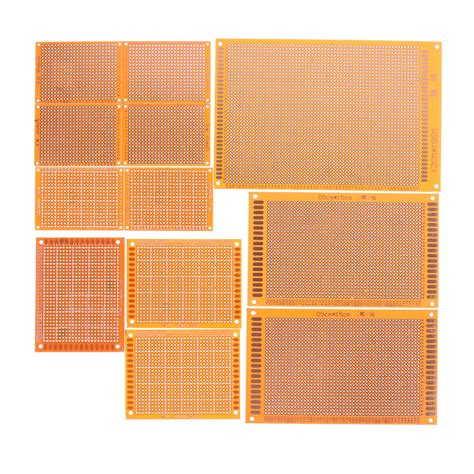
Application And Use Cases: PCB Vs. Breadboard
Printed Circuit Boards (PCBs) and breadboards are fundamental tools in the realm of electronics, each serving distinct purposes and applications. Understanding their differences in terms of application and use cases is crucial for anyone involved in electronic design and prototyping.
PCBs are the backbone of most electronic devices, providing a permanent and reliable platform for mounting and interconnecting electronic components.
They are typically used in the final stages of product development and mass production. The design of a PCB involves creating a detailed layout that specifies the exact placement of components and the routing of electrical connections. This layout is then transferred onto a board made of insulating material, usually fiberglass, with conductive copper tracks etched onto its surface. The result is a robust and durable circuit that can withstand the rigors of everyday use.
In contrast, breadboards are primarily used for prototyping and experimentation.
They offer a flexible and reusable platform for building and testing circuits without the need for soldering. Breadboards consist of a grid of holes into which components can be inserted and interconnected using jumper wires. This makes them ideal for quickly assembling and modifying circuits, allowing engineers and hobbyists to test different configurations and troubleshoot issues on the fly. However, breadboards are not suitable for permanent installations due to their temporary nature and susceptibility to loose connections and electrical noise.
One of the key differences between PCBs and breadboards lies in their respective use cases.
PCBs are indispensable in the production of consumer electronics, industrial machinery, and medical devices, where reliability and precision are paramount. For instance, the intricate circuitry found in smartphones, computers, and automotive control systems is all built on PCBs. These applications demand high levels of performance and durability, which PCBs are well-equipped to provide.
On the other hand, breadboards are invaluable during the initial stages of electronic design, particularly in educational settings and research laboratories.
They enable students and researchers to explore circuit concepts and validate theoretical designs before committing to a final PCB layout. Breadboards are also popular among hobbyists and makers who enjoy experimenting with electronics and building custom projects. The ease of use and reusability of breadboards make them an excellent choice for learning and innovation.
Despite their differences, PCBs and breadboards can complement each other in the development process.
A typical workflow might involve using a breadboard to prototype and refine a circuit design, followed by the creation of a PCB for the final product. This approach allows designers to leverage the strengths of both tools, ensuring that the final circuit is both functional and reliable.
In summary, while PCBs and breadboards serve different purposes, they are both essential in the field of electronics. PCBs provide a permanent, high-performance solution for mass-produced devices, whereas breadboards offer a flexible, reusable platform for prototyping and experimentation. By understanding the unique applications and use cases of each, designers can make informed decisions that optimize the development process and result in successful electronic products.
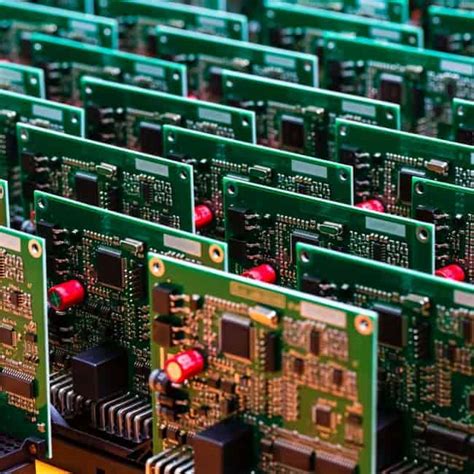
Cost And Time Efficiency: PCB Vs. Breadboard
When considering the cost and time efficiency of Printed Circuit Boards (PCBs) versus breadboards, it is essential to understand the fundamental differences between these two tools used in electronic prototyping and development. Both PCBs and breadboards serve distinct purposes and offer unique advantages and disadvantages, particularly in terms of cost and time efficiency.
To begin with, breadboards are widely recognized for their convenience and flexibility in the initial stages of electronic circuit design.
They allow engineers and hobbyists to quickly assemble and modify circuits without the need for soldering. This ease of use significantly reduces the time required to test and iterate on designs. Breadboards are reusable, which means that components can be easily swapped out and rearranged, making them an ideal choice for experimentation and learning. However, this flexibility comes at a cost. Breadboards are typically more prone to loose connections and electrical noise, which can lead to unreliable performance in complex circuits. Additionally, the physical layout of a breadboard can become cumbersome and unwieldy as the circuit complexity increases.
In contrast, PCBs offer a more permanent and reliable solution for circuit design.
Once a design is finalized, a PCB can be manufactured to create a robust and compact circuit. The process of designing a PCB involves using specialized software to create a schematic and layout, which is then sent to a manufacturer for production. While this process can be time-consuming and requires a certain level of expertise, the end result is a highly reliable and professional-looking circuit. PCBs are less susceptible to electrical noise and loose connections, making them suitable for more complex and high-performance applications.
When comparing the cost efficiency of PCBs and breadboards, it is important to consider both the short-term and long-term expenses.
Breadboards are relatively inexpensive and can be reused for multiple projects, making them a cost-effective option for initial prototyping and small-scale projects. The components used on a breadboard can also be easily removed and reused, further reducing costs. However, as the project scales up and moves towards production, the limitations of breadboards become apparent. The need for a more reliable and permanent solution often necessitates the transition to a PCB.
The cost of producing a PCB can vary widely depending on factors such as the complexity of the design, the number of layers, and the quantity being produced.
For small-scale production or one-off prototypes, the initial cost of designing and manufacturing a PCB can be relatively high. However, for larger production runs, the cost per unit decreases significantly, making PCBs a more cost-effective solution in the long run. Additionally, the use of PCBs can reduce the time and labor required for assembly, as components are soldered directly onto the board, eliminating the need for manual wiring and connections.
In conclusion, the choice between using a breadboard or a PCB largely depends on the specific requirements of the project and the stage of development. Breadboards offer a quick and flexible solution for initial prototyping and experimentation, while PCBs provide a more reliable and professional option for finalized designs and larger-scale production. By carefully considering the cost and time efficiency of each option, engineers and hobbyists can make informed decisions that best suit their needs and objectives.

